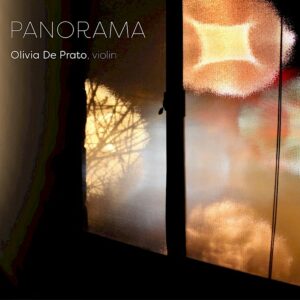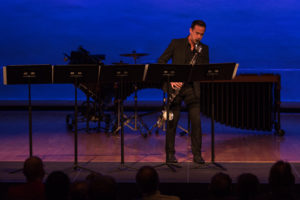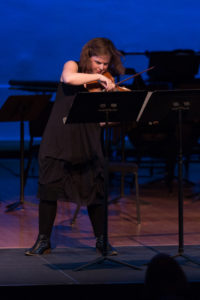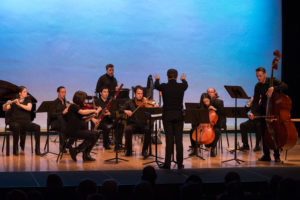Panorama – Olivia de Prato (New Focus)
Violinist Olivia de Prato has established herself as a staunch advocate of new music. In addition to her work with Mivos Quartet, she is a talented soloist. On her second solo release for New Focus Recordings, Panorama, she undertakes a recital disc of female composers. A number of the pieces include electronics, fleshing out the solo texture in diverting fashion.
The album opens with Missy Mazzoli’s violin plus electronics piece Tooth and Nail (2010). The original version was written for violist Nadia Sirota; this is a transcription for violin. The piece begins with string sounds in the electronics accompanying the live violin. De Prato digs into the vigorous passagework, executing arpeggiations and glissandos with incisiveness. As the piece progresses the electronics add a lower register to the piece, ending the piece. This is probably my favorite of Mazzoli’s instrumental works.
Jeom Jaeng Yi (Fortune Teller) by Jen Shyu is inspired by American polyartist Theresa Hak Kyung Cha, including some of her poetry as a spoken word component. The gestures in the solo part are based on speech rhythms. Speaking isn’t constant but de Prato makes clear the connections between violin and voice. There is a mournful cast to the piece: someone’s fortune was disappointing.
The title track, for violin and electronics by Angelic Negrón, employs a bath of ambient synths and supple legato phrasing from de Prato, often with glissandos, that employs sumptuous high notes. Mallet samples and piano press the music forward, with repeating passages and pizzicato in the violin responding to the post-minimal electronics. Gradually the music picks up speed, with regularly articulated synth chords and oscillations in the violin. The texture becomes fuller, with a return of synth ostinatos, and once again upper register violin glissandos soar over the top of the varied palette of electronic sounds. The coda features a two note oscillation and clouds of chords accompanying the violin’s final melodic strands.
Mapping a Joyful Path, by Miya Masaoka, employs pitch bends in places in the synth parts. Mostly, however, the electronics part consists of sustained sine tones that are varied in register, with overtones skirting in and out of the texture. De Prato plays with varying bow pressure, aggressive repeated notes, microtones in double stops, and Eastern sliding tone to interpret a multifaceted and fetching piece. It finishes with a held altissimo note in the violin and the drones receding.
The recording concludes with Balconies by British composer Samantha Fernando. The piece can be played by five live violinists or one with a pre-recorded part. It begins with an arpeggiated flourish and overlapping ostinatos. After another iteration of the opening arpeggio, the texture thickens in the second section, moving from the triadic opening to secundal chords articulated with repeating notes. Soft pizzicatos interrupt the chordal texture, and the arpeggio announces a third section, this one supplying more spacing, but no less complicated harmonies. Melodic fragments are taken up, breaking up the verticals for a time. Melody and richly constructed chords then interact. The original gesture is reconfigured as chords in the alto register, followed by a coda of pizzicatos. Balconies is an arresting piece on recording. I would love to hear de Prato and four friends playing it live.
Once again, Olivia de Prato has presented a program of fascinating musical discoveries. Panorama supports female composers with advocacy and skill. Recommended.
-Christian Carey



